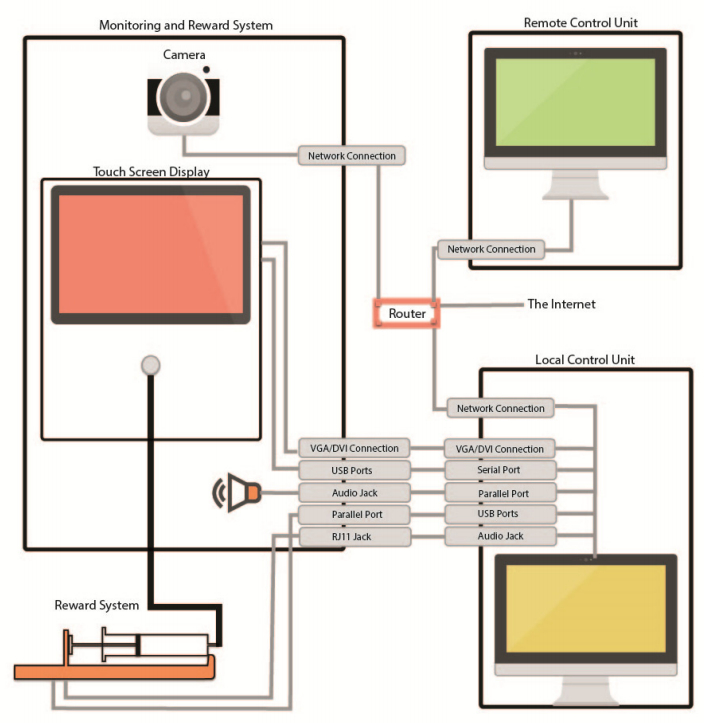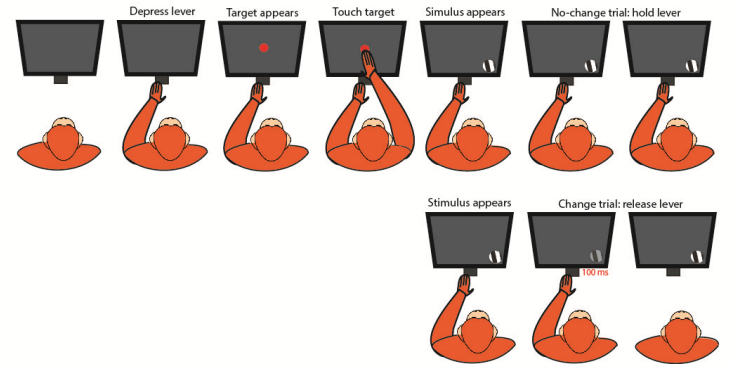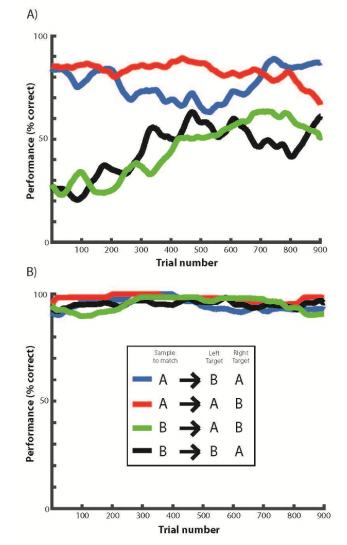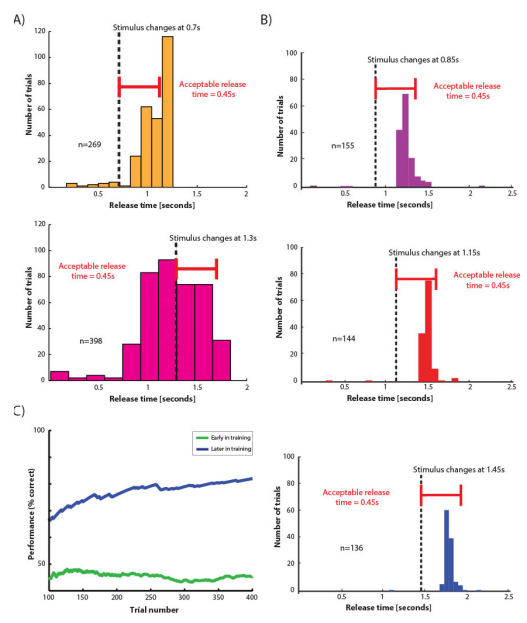|
[1]
|
L. A. Zadeh, Fuzzy sets, Information and Control, 8 (1965), 338–353. https://doi.org/10.1016/S0019-9958(65)90241-X doi: 10.1016/S0019-9958(65)90241-X

|
|
[2]
|
K. T. Atanassov, Intuitionistic fuzzy sets, Fuzzy Set. Syst., 20 (1986), 87–96. https://doi.org/10.1016/S0165-0114(86)80034-3 doi: 10.1016/S0165-0114(86)80034-3

|
|
[3]
|
W.-R. Zhang, Bipolar fuzzy sets and relations: a computational frame work for cognitive modeling and multi agent decision analysis, The First International Joint Conference of the North American Fuzzy Information Processing Society Biannual Conference, San Antonio, TX, USA, 1994,305–309.https://doi.org/10.1109/IJCF.1994.375115
|
|
[4]
|
J. J. Chen, S. G. Li, S. Q. Ma, X. P Wang, m-Polar fuzzy sets: An extension of bipolar fuzzy sets, Sci. World J., 2014 (2014), 416530. https://doi.org/10.1155/2014/416530 doi: 10.1155/2014/416530

|
|
[5]
|
F. Smarandache, A unifying field in logics: neutrosophic logic, Philosophy: American Research Press, 1999.
|
|
[6]
|
R. R. Yager, Pythagorean membership grades in multicriteria decision making, IEEE T. Fuzzy Syst., 22 (2014), 958–965. https://doi.org/10.1109/TFUZZ.2013.2278989 doi: 10.1109/TFUZZ.2013.2278989

|
|
[7]
|
R. R. Yager, Generalized orthopair fuzzy sets, IEEE T. Fuzzy Syst., 25 (2017), 1222–1230. https://doi.org/10.1109/TFUZZ.2016.2604005 doi: 10.1109/TFUZZ.2016.2604005

|
|
[8]
|
M. R. Seikh, U. Mandal, Multiple attribute group decision making based on quasirung orthopair fuzzy sets: Application to electric vehicle charging station site selection problem, Eng. Appl. Artif. Intel., 115 (2022), 105299.https://doi.org/10.1016/j.engappai.2022.1052
|
|
[9]
|
M. R. Seikh, U. Mandal, Multiple attribute decision-making based on (3,4)-quasirung fuzzy sets, Granul. Comput., 7 (2022), 965–978. https://doi.org/10.1007/s41066-021-00308-9 doi: 10.1007/s41066-021-00308-9

|
|
[10]
|
M. R. Seikh, U. Mandal, q-Rung orthopair fuzzy Frank aggregation operators and its application in multiple attribute decision-making with unknown attribute weights, Granul. Comput., 7 (2022), 709–730. https://doi.org/10.1007/s41066-021-00290-2 doi: 10.1007/s41066-021-00290-2

|
|
[11]
|
M. R. Seikh, U. Mandal, q-Rung orthopair fuzzy Archimedean aggregation operators: application in the site selection for software operating units, Symmetry, 15 (2023), 1680. https://doi.org/10.3390/sym15091680 doi: 10.3390/sym15091680

|
|
[12]
|
S. Ashraf, S. Abdullah, T. Mahmood, F. Ghani, T. Mahmood, Spherical fuzzy sets and their applications in multi-attribute decision making problems, J. Intell. Fuzzy Syst., 36 (2019), 2829–2844. https://doi.org/10.3233/JIFS-172009 doi: 10.3233/JIFS-172009

|
|
[13]
|
T. Mahmood, K. Ullah, Q. Khan, N. Jan, An approach toward decision-making and medical diagnosis problems using the concept of spherical fuzzy sets, Neural Comput. & Applic., 31 (2019), 7041–7053. https://doi.org/10.1007/s00521-018-3521-2 doi: 10.1007/s00521-018-3521-2

|
|
[14]
|
T. Mahmood, I. Haleemzai, Z. Ali, D. Pamucar, D. Marinkovic, Power muirhead mean operators for interval-valued linear diophantine fuzzy sets and their application in decision-making strategies, Mathematics, 10 (2021), 70. https://doi.org/10.3390/math10010070 doi: 10.3390/math10010070

|
|
[15]
|
T. Mahmood, A novel approach towards bipolar soft sets and their applications, J. Math., 2020 (2020), 4690808. https://doi.org/10.1155/2020/4690808 doi: 10.1155/2020/4690808

|
|
[16]
|
M. Riaz, M. R. Hashmi, Linear diophantine fuzzy set and its applications towards multi-attribute decision-making problems, J. Intell. Fuzzy Syst., 37 (2019), 5417–5439.
|
|
[17]
|
M. Z. Hanif, N. Yaqoob, M. Riaz, M. Aslam, Linear diophantine fuzzy graphs with new decision-making approach, AIMS Mathematics, 7 (2022), 14532–14556. https://doi.org/10.3934/math.2022801 doi: 10.3934/math.2022801

|
|
[18]
|
A. O. Almagrabi, S. Abdullah, M. Shams, Y. D. Al-Otaibi, S. Ashraf, A new approach to q-linear Diophantine fuzzy emergency decision support system for COVID19, J. Ambient Intell. Human. Comput., 13 (2022), 1687–1713. https://doi.org/10.1007/s12652-021-03130-y doi: 10.1007/s12652-021-03130-y

|
|
[19]
|
H. Kamacı, Complex linear diophantine fuzzy sets and their cosine similarity measures with applications, Complex Intell. Syst., 8 (2022), 1281–1305. https://doi.org/10.1007/s40747-021-00573-w doi: 10.1007/s40747-021-00573-w

|
|
[20]
|
T. Mahmood, I. Haleemzai, Z. Ali, D. Pamucar, and D. Marinkovic, Power muirhead mean operators for interval-valued linear diophantine fuzzy sets and their application in decision-making strategies, Mathematics, 10 (2021), 70. https://doi.org/10.3390/math10010070 doi: 10.3390/math10010070

|
|
[21]
|
S. Ayub, M. Shabir, M. Riaz, M. Aslam, R. Chinram, Linear diophantine fuzzy relations and their algebraic properties with decision making, Symmetry, 13 (2021), 945. https://doi.org/10.3390/sym13060945 doi: 10.3390/sym13060945

|
|
[22]
|
M. Parimala, S. Jafari, M. Riaz, M. Aslam, Applying the dijkstra algorithm to solve a linear diophantine fuzzy environment, Symmetry, 13 (2021), 1616. https://doi.org/10.3390/sym13091616 doi: 10.3390/sym13091616

|
|
[23]
|
M. Riaz, H. M. A. Farid, Enhancing green supply chain efficiency through linear diophantine fuzzy soft-max aggregation operators, J. Ind. Intell., 1 (2023), 8–29. https://doi.org/10.56578/jii010102 doi: 10.56578/jii010102

|
|
[24]
|
J. J. Peng, X. G. Chen, X. K. Wang, J. Q. Wang, Q. Q. Long, L. J. Yin, Picture fuzzy decision-making theories and methodologies: a systematic review, Int. J. Syst. Sci., 54 (2023), 2663–2675. https://doi.org/10.1080/00207721.2023.2241961 doi: 10.1080/00207721.2023.2241961

|
|
[25]
|
A. B. Yan, Y. Chen, Z. Y. Gao, T. M. Ni, Z. F. Huang, J. Cui, et al., Fempim: A FeFET -based multifunctional processing-in-memory cell, IEEE T. Circuits-II, 71 (2024), 2299–2303. https://doi.org/10.1109/TCSII.2023.3331267 doi: 10.1109/TCSII.2023.3331267

|
|
[26]
|
L. R. Yin, L. Wang, S. Y. Lu, R. Y. Wang, Y. S. Yang, B. Yang, et al., Convolution-transformer for image feature extraction, CMES-Comp. Model. Eng., 141 (2024), 87–106.https://doi.org/10.32604/cmes.2024.051083
|
|
[27]
|
L. R. Yin, L. Wang, S. Y. Lu, R. Y. Wang, H. T. Ren, A. AlSanad, et al., AFBNet: A lightweight adaptive feature fusion module for super-resolution algorithms, CMES-Comp. Model. Eng., 140 (2024), 2315–2347.https://doi.org/10.32604/cmes.2024.050853
|
|
[28]
|
H. M. A. Farid, R. Kausar, M. Riaz, D. Marinkovic, M. Stankovic, Linear diophantine fuzzy fairly averaging operator for suitable biomedi cal material selection, Axioms, 11 (2022), 735. https://doi.org/10.3390/axioms11120735 doi: 10.3390/axioms11120735

|
|
[29]
|
M. Riaz, H. Garg, M. R. Hashmi, H. M. A. Farid, Generalized linear diophantine fuzzy choquet integral with application to the project management and risk analysis, Comput. Appl. Math., 42 (2023), 286. https://doi.org/10.1007/s40314-023-02421-8 doi: 10.1007/s40314-023-02421-8

|
|
[30]
|
M. Riaz, H. M. A. Farid, W. W. Wang, D. Pamucar, Interval-valuedlinear diophantine fuzzy frank aggregation operators with multi-criteria decision making, Mathematics, 10 (2022), 1811. https://doi.org/10.3390/math10111811 doi: 10.3390/math10111811

|
|
[31]
|
A. Revathy, V. Inthumathi, S. Krishnaprakash, M. Kishorekumar, Fermatean fuzzy normalised bonferroni mean operator in multi criteria decision making on selection of electric bike, 2023 Fifth International Conference on Electrical, Computer and Communication Technologies (ICECCT), Erode, India, 2023, 1–7.https://doi.org/10.1109/ICECCT56650.2023.10179658
|
|
[32]
|
X. P. Yang, T. Mahmood, J. Ahmmad, Picture fuzzy soft bonferroni mean aggregation operators and their applications, Heliyon, 9 (2023), e17278. https://doi.org/10.1016/j.heliyon.2023.e17278 doi: 10.1016/j.heliyon.2023.e17278

|
|
[33]
|
S. Chakraborty, A. K. Saha, Novel fermatean fuzzy bonferroni mean aggregation operators for selecting optimal health care waste treatment technology, Eng. Appl. Artif. Intel., 119 (2023), 105752. https://doi.org/10.1016/j.engappai.2022.105752 doi: 10.1016/j.engappai.2022.105752

|
|
[34]
|
K. Jabeen, Q. Khan, K. Ullah, T. Senapati, S. Moslem, An approach to madmbased on aczel-alsina power bonferroni aggregation operators for q-rung orthopair fuzzy sets, IEEE Access, 11 (2023), 105248–105261. https://doi.org/10.1109/ACCESS.2023.3270267 doi: 10.1109/ACCESS.2023.3270267

|
|
[35]
|
H. M. A. Farid, M. Riaz, M. J. Khan, P. Kumam, K. Sitthithakerngkiet, Sustainable thermal power equipment supplier selection by Einstein prioritized linear Diophantine fuzzy aggregation operators, AIMS Mathematics, 7 (2022), 11201–11242. https://doi.org/10.3934/math.2022627 doi: 10.3934/math.2022627

|
|
[36]
|
A. Iampan, G. S. Garcıa, M. Riaz, H. M. A. Farid, R. Chinram, Linear Diophantine fuzzy Einstein aggregation operators for multicriteria decision-making problems, J. Math., 2021 (2021), 5548033. https://doi.org/10.1155/2021/5548033 doi: 10.1155/2021/5548033

|
|
[37]
|
H. Z. Ibrahim, I. Alshammari, (n, m)-Rung orthopair fuzzy sets with applications to multi-criteria decision making, IEEE Access, 10 (2022), 99562–99572. https://doi.org/10.1109/ACCESS.2022.3207184 doi: 10.1109/ACCESS.2022.3207184

|
|
[38]
|
P. Panpho, P. Yiarayong, (p, q)-Rung linear Diophantine fuzzy sets and their application in decision-making, Comp. Appl. Math., 42 (2023), 324. https://doi.org/10.1007/s40314-023-02456-x doi: 10.1007/s40314-023-02456-x

|
|
[39]
|
M. Riaz, H. M. A. Farid, F. Karaaslan, Linear Diophantine fuzzy aggregation operators with multi-criteria decision-making, Journal of Computational and Cognitive Engineering, 4 (2023), 24–35. https://doi.org/10.47852/bonviewJCCE3202420 doi: 10.47852/bonviewJCCE3202420

|
|
[40]
|
M. R. Seikh, P. Chatterjee, Identifying sustainable strategies for electronic waste management utilizing confidence-based group decision-making method in interval valued Fermatean fuzzy environment, Eng. Appl. Artif. Intel., 135 (2024), 108701. https://doi.org/10.1016/j.engappai.2024.108701 doi: 10.1016/j.engappai.2024.108701

|
|
[41]
|
M. R. Seikh, P. Chatterjee, Determination of best renewable energy sources in India using SWARA-ARAS in confidence level-based interval-valued Fermatean fuzzy environment, Appl. Soft Comput., 155 (2024), 111495. https://doi.org/10.1016/j.asoc.2024.111495 doi: 10.1016/j.asoc.2024.111495

|
|
[42]
|
M. B. Khan, A. M. Deaconu, J. Tayyebi, D. E. Spridon, Diamond intuitionistic fuzzy sets and their applications, IEEE Access, 12 (2024), 176171–176183. https://doi.org/10.1109/ACCESS.2024.3502202 doi: 10.1109/ACCESS.2024.3502202

|
|
[43]
|
Y. M. Zhang, Multi‐slicing strategy for the three‐dimensional discontinuity layout optimization (3D DLO), Int. J. Numer. Anal. Met., 41 (2017), 488–507. https://doi.org/10.1002/nag.2566 doi: 10.1002/nag.2566

|
|
[44]
|
Y. M. Zhang, X. Y. Zhuang, A softening-healing law for self-healing quasi-brittle materials: analyzing with strong discontinuity embedded approach, Eng. Fract. Mech., 192 (2018), 290–306. https://doi.org/10.1016/j.engfracmech.2017.12.018 doi: 10.1016/j.engfracmech.2017.12.018

|
|
[45]
|
Y. M. Zhang, X. Y. Zhuang, Cracking elements: A self-propagating strong discontinuity embedded approach for quasi-brittle fracture, Finite Elem. Anal. Des., 144 (2018), 84–100. https://doi.org/10.1016/j.finel.2017.10.007 doi: 10.1016/j.finel.2017.10.007

|
|
[46]
|
Y. M. Zhang, X. Y. Zhuang, Cracking elements method for dynamic brittle fracture, Theor. Appl. Fract. Mec., 102 (2019), 1–9. https://doi.org/10.1016/j.tafmec.2018.09.015 doi: 10.1016/j.tafmec.2018.09.015

|
|
[47]
|
Y. M. Zhang, H. A. Mang, Global cracking elements: A novel tool for Galerkin‐based approaches simulating quasi‐brittle fracture, Int. J. Numer. Meth. Eng., 121 (2020), 2462–2480. https://doi.org/10.1002/nme.6315 doi: 10.1002/nme.6315

|
|
[48]
|
Y. M. Zhang, X. Y. Zhuang, R. Lackner, Stability analysis of shotcrete supported crown of NATM tunnels with discontinuity layout optimization, Int. J. Numer. Anal. Met., 42 (2018), 1199–1216. https://doi.org/10.1002/nag.2775 doi: 10.1002/nag.2775

|
|
[49]
|
Y. M. Zhang, M. Zeiml, C. Pichler, R. Lackner, Model-based risk assessment of concrete spalling in tunnel linings under fire loading, Eng. Struct., 77 (2014), 207–215. https://doi.org/10.1016/j.engstruct.2014.02.033 doi: 10.1016/j.engstruct.2014.02.033

|
|
[50]
|
Y. M. Zhang, R. Lackner, M. Zeiml, H. A. Mang, Strong discontinuity embedded approach with standard SOS formulation: Element formulation, energy-based crack-tracking strategy, and validations, Comput. Method. Appl. M., 287 (2015), 335–366. https://doi.org/10.1016/j.cma.2015.02.001 doi: 10.1016/j.cma.2015.02.001

|
|
[51]
|
Y. M. Zhang, Z. R. Gao, Y. Y. Li, X. Y. Zhuang, On the crack opening and energy dissipation in a continuum based disconnected crack model, Finite Elem. Anal. Des., 170 (2020), 103333. https://doi.org/10.1016/j.finel.2019.103333 doi: 10.1016/j.finel.2019.103333

|
|
[52]
|
Y. M. Zhang, X. Q. Yang, X. Y. Wang, X. Y. Zhuang, A micropolar peridynamic model with non-uniform horizon for static damage of solids considering different nonlocal enhancements, Theor. Appl. Fract. Mec., 113 (2021), 102930. https://doi.org/10.1016/j.tafmec.2021.102930 doi: 10.1016/j.tafmec.2021.102930

|
|
[53]
|
Y. M. Zhang, J. G. Huang, Y. Yuan, H. A. Mang, Cracking elements method with a dissipation-based arc-length approach, Finite Elem. Anal. Des., 195 (2021), 103573. https://doi.org/10.1016/j.finel.2021.103573 doi: 10.1016/j.finel.2021.103573

|
|
[54]
|
Y. M. Zhang, Z. R. Gao, X. Y. Wang, Q. Liu, Predicting the pore-pressure and temperature of fire-loaded concrete by a hybrid neural network, Int. J. Comp. Meth., 19 (2022), 2142011. https://doi.org/10.1142/S0219876221420111 doi: 10.1142/S0219876221420111

|
|
[55]
|
Y. M. Zhang, X. Y. Wang, X. Q. Wang, H. A. Mang, Virtual displacement-based discontinuity layout optimization, Int. J. Numer. Meth. Eng., 123 (2022), 5682–5694. https://doi.org/10.1002/nme.7084 doi: 10.1002/nme.7084

|
|
[56]
|
Y. M. Zhang, Z. R. Gao, X. Y. Wang, Q. Liu, Image representations of numerical simulations for training neural networks, Comput. Model. Eng. Sci., 134 (2023), 821–833. https://doi.org/10.32604/cmes.2022.022088 doi: 10.32604/cmes.2022.022088

|
|
[57]
|
Z. Ali, K. Hayat, D. Pamucar, Analysis of coupling in geographic information systems based on WASPAS method for bipolar complex fuzzy linguistic Aczel-Alsina power aggregation operators, PloS One, 19 (2024), e0309900. https://doi.org/10.1371/journal.pone.0309900 doi: 10.1371/journal.pone.0309900

|
|
[58]
|
Z. Ali, Fairly aggregation operators based on complex p, q-rung orthopair fuzzy sets and their application in decision-making problems, Spectrum of Operational Research, 2 (2025), 113–131. https://doi.org/10.31181/sor21202514 doi: 10.31181/sor21202514

|
|
[59]
|
K. Hayat, R. A. Shamim, H. AlSalman, A. Gumaei, X. P. Yang, M. Azeem Akbar, Group generalized q‐rung orthopair fuzzy soft sets: new aggregation operators and their applications, Math. Probl. Eng., 2021 (2021), 5672097. https://doi.org/10.1155/2021/5672097 doi: 10.1155/2021/5672097

|
|
[60]
|
M. S. Raja, K. Hayat, A. Munshi, T. Mahmood, R. Sheraz, I. Matloob, Aggregation operators on group-based generalized q-rung orthopair fuzzy N-soft sets and applications in solar panel evaluation, Heliyon, 10 (2024), e27323. https://doi.org/10.1016/j.heliyon.2024.e27323 doi: 10.1016/j.heliyon.2024.e27323

|
|
[61]
|
S. Petchimuthu, M. F. Banu, C. Mahendiran, T. Premala, Power and energy transformation: Multi-criteria decision-making utilizing complex q-rung picture fuzzy generalized power prioritized Yager operators, Spectrum of Operational Research, 2 (2025), 219–258. https://doi.org/10.31181/sor21202525 doi: 10.31181/sor21202525

|
|
[62]
|
S. Petchimuthu, B. Palpandi, P. Pirabaharan, M. F. Banu, Sustainable urban innovation and resilience: Artificial intelligence and q-rung orthopair fuzzy expoLogarithmic framework, Spectrum of Decision Making and Applications, 2 (2025), 242–267. https://doi.org/10.31181/sdmap21202526 doi: 10.31181/sdmap21202526

|
|
[63]
|
P. D. Liu, S. Naz, M. Akram, M. Muzammal, Group decision-making analysis based on linguistic q-rung orthopair fuzzy generalized point weighted aggregation operators, Int. J. Mach. Learn. & Cyber., 13 (2022), 883–906. https://doi.org/10.1007/s13042-021-01425-2 doi: 10.1007/s13042-021-01425-2

|
|
[64]
|
S. Naz, M. Akram, A. B. Saeid, A. Saadat, Models for MAGDM with dual hesitant q-rung orthopair fuzzy 2-tuple linguistic MSM operators and their application to the COVID-19 pandemic, Expert Syst., 39 (2022), e13005. https://doi.org/10.1111/exsy.13005 doi: 10.1111/exsy.13005

|
|
[65]
|
M. Akram, U. Noreen, M. M. A. Al-Shamiri, D. Pamucar, Integrated decision-making methods based on 2-tuple linguistic m-polar fuzzy information, AIMS Math, 7 (2022), 14557–14594. https://doi.org/10.3934/math.2022802 doi: 10.3934/math.2022802

|
|
[66]
|
J. C. Jiang, X. D. Liu, Z. W. Wang, W. P. Ding, S. T. Zhang, Large group emergency decision-making with bi-directional trust in social networks: A probabilistic hesitant fuzzy integrated cloud approach, Inform. Fusion, 102 (2024), 102062. https://doi.org/10.1016/j.inffus.2023.102062 doi: 10.1016/j.inffus.2023.102062

|
|
[67]
|
J. C. Jiang, X. D. Liu, Z. W. Wang, W. P. Ding, S. T. Zhang, H. Xu, Large group decision-making with a rough integrated asymmetric cloud model under multi-granularity linguistic environment, Inform. Sciences, 678 (2024), 120994. https://doi.org/10.1016/j.ins.2024.120994 doi: 10.1016/j.ins.2024.120994

|










 DownLoad:
DownLoad:














